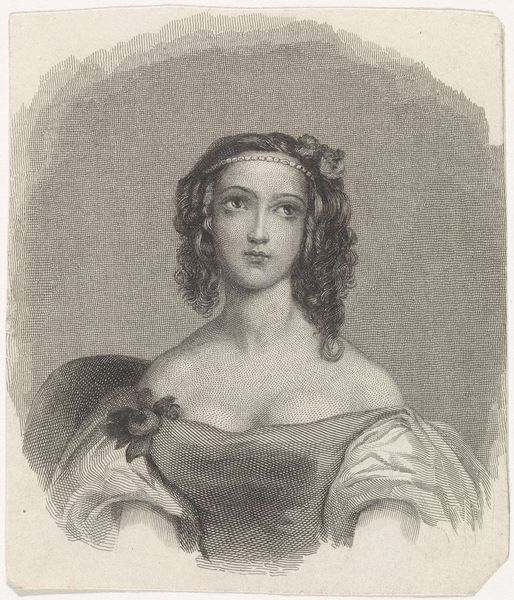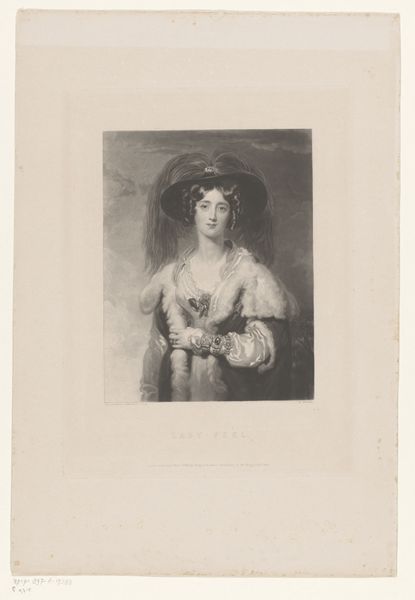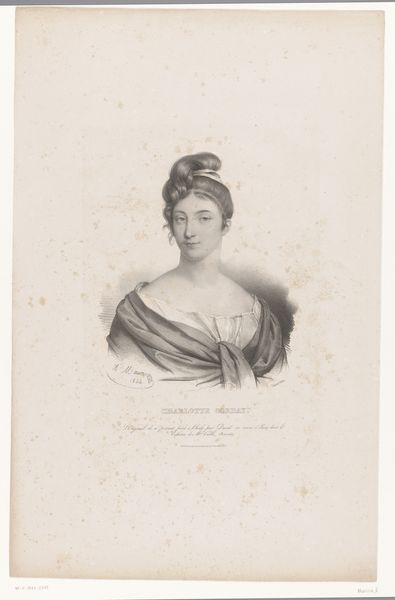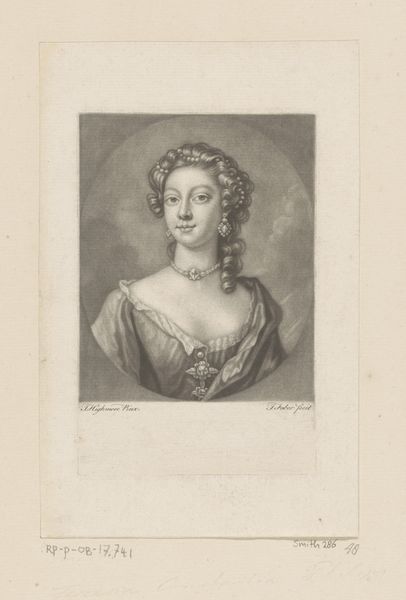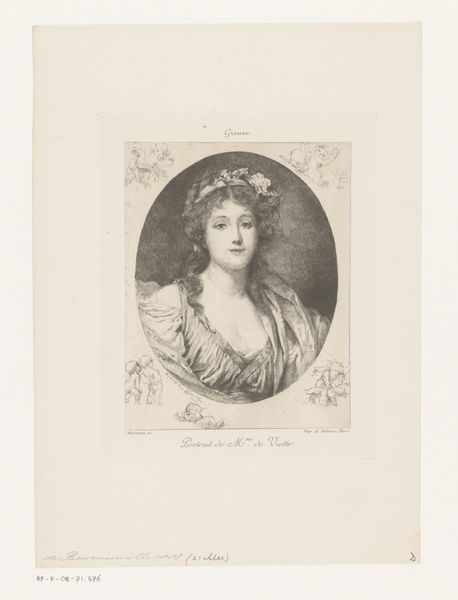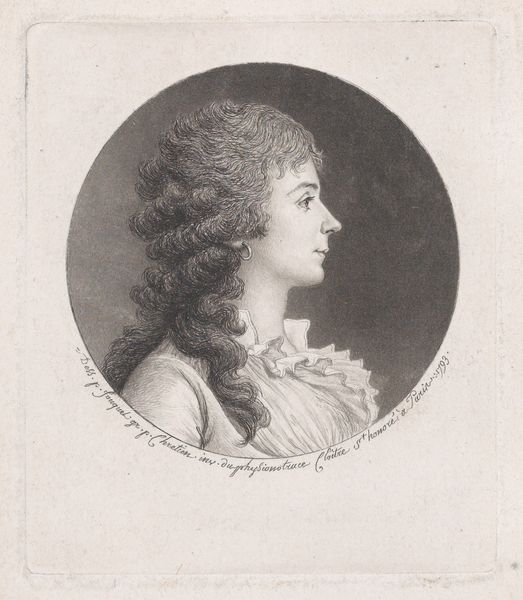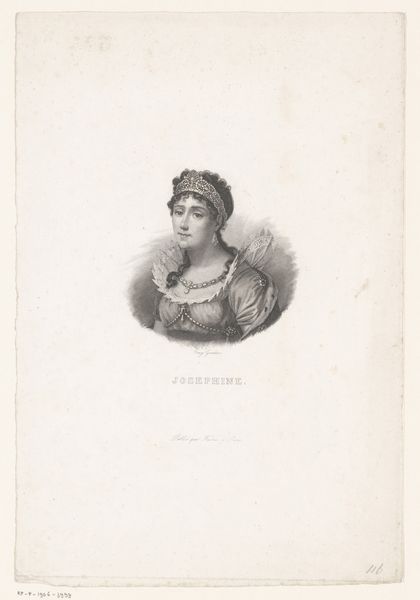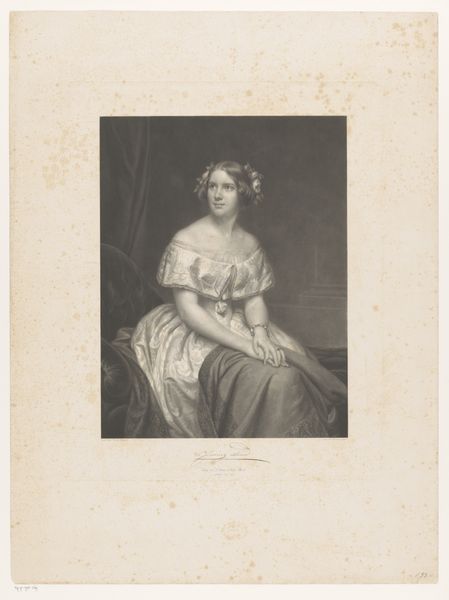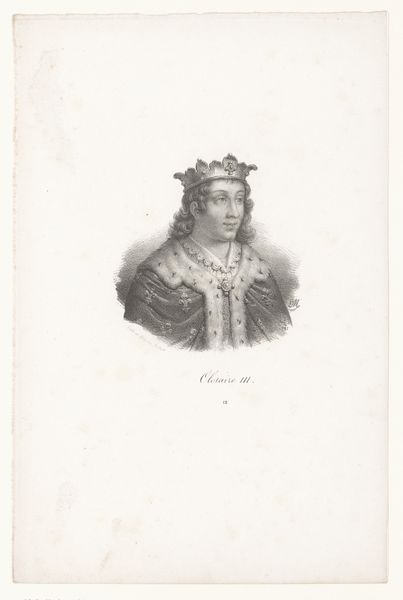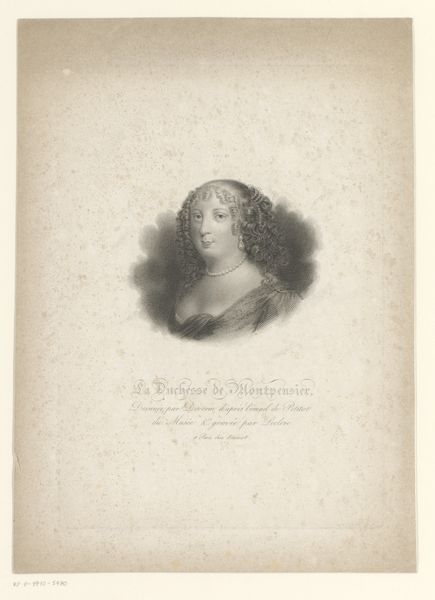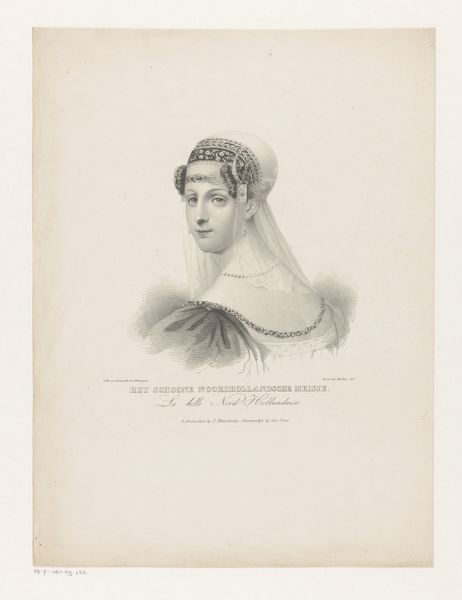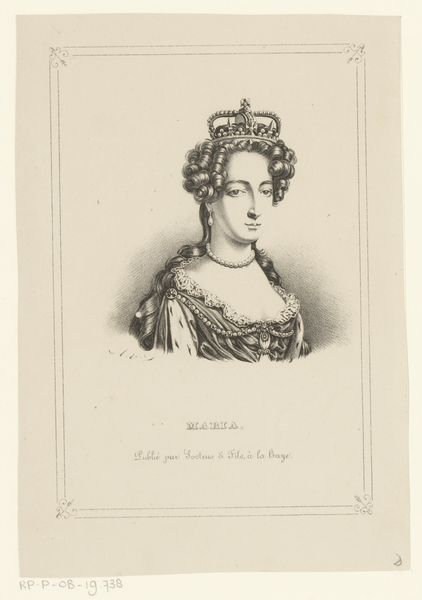
drawing, graphite
#
portrait
#
pencil drawn
#
drawing
#
pencil sketch
#
pencil drawing
#
romanticism
#
surrealism
#
graphite
#
portrait drawing
#
academic-art
Dimensions: height 151 mm, width 133 mm
Copyright: Rijks Museum: Open Domain
Curator: Before us is Bernard Romain Julien’s “Portret van een dame met lange vlechten,” a graphite drawing held at the Rijksmuseum, created sometime between 1818 and 1865. Editor: The texture is what first grabs me. The controlled scribbles creating soft volumes, especially around the face and hair—it almost feels photographic in its realism, yet softened, romantic. Curator: It’s fascinating how Julien navigates Romanticism while adhering to academic artistic conventions. Consider the subject: a woman, adorned, but not as a passive object of beauty. There's an intentional gaze, suggesting an internal life beyond mere aesthetics. It beckons questions regarding female representation and identity. Editor: And look closely at those braids. That's so much labor manifested! We can infer social standing from the deliberate craft of hair, from her garments, from the jeweled accessories themselves. The pencil, the graphite, all these materials facilitate a translation of societal structure onto paper. It emphasizes the distance between the sitter and the artist. Curator: That very act of ‘translation’ reveals power dynamics at play. Julien, presumably male, capturing a female subject within specific cultural parameters. Were the “vlechten”–braids—a personal statement, or societal expectation? Are we looking at individuality or compliance? Editor: Compliance within structures requiring the graphite and the artist's hand to render visible her beauty as object—this tension, the control exerted to arrive at idealized form, it becomes visible under such controlled conditions of display and viewership. The medium implicates its own role in shaping her presentation, quite literally. Curator: Such materiality pushes us to further deconstruct this visual narrative. By contemplating the 'how' and 'why' this image exists, we activate critical lenses related to power, gender, and representation, especially in historical portraits. Editor: Precisely. Recognizing the tools of art production exposes how materials are interwoven in systems dictating what we deem visually compelling and culturally appropriate in representation. It’s humbling. Curator: Agreed, analyzing historical art through these integrated lenses helps illuminate relevant socio-political realities for the present day. Editor: Right—forcing the contemporary gaze to acknowledge historical conditions is crucial work.
Comments
No comments
Be the first to comment and join the conversation on the ultimate creative platform.
